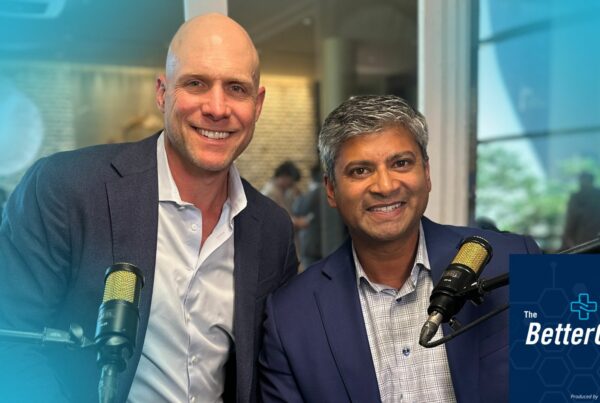On a recent episode of The Better Care Podcast, Dr. Brian Fengler, Chief Medical Officer and Co-Founder of EvidenceCare, had a conversation with Dr. Miguel Benet, Senior Vice President of Clinical Operations at CHS (Community Health Systems).
They discussed several noteworthy initiatives that CHS has excelled at within the field of clinical operations. Here are five areas of focus that can be beneficial for any hospital leader looking to improve clinical operations within a health system.
Some quotes have been slightly edited for brevity.
1. Focus on Workforce Development
As the clinical workforce shortage persists, most health systems are used to adapting through other avenues such as technology, but people remain at the core of this industry. This is why investing in the growth and development of teams and individuals is a key focus for CHS. This strategy has created and continues to create a skilled and motivated workforce, positively impacting patient outcomes and overall healthcare quality.
“Our approach focuses on supporting our workforce by intensifying efforts to enhance efficiency for clinicians. Simultaneously, we are dedicated to expanding training pipelines across the healthcare spectrum, encompassing physicians, nurses, technicians, and the entire team.
This comprehensive training initiative extends from the initial stages through bedside care, involving strategic partnerships and educational programs. We not only aim to train new workforce entrants but also ensure the ongoing success of graduates through continued training programs, facilitating their seamless integration into the workforce.” – Dr. Miguel Benet
People development is not limited to system-wide programs. While reflecting on his own career journey and current position, Dr. Benet acknowledged the importance of investing in the people around him. The focus on team development was a welcome surprise when he took his role at CHS.
2. Long-Term Commitment to Patient Safety
CHS has a remarkable track record of reducing patient safety events by over ninety percent in the last ten years. The importance of a sustained and intentional effort towards patient safety is highlighted by their success.
How did they do it?
Company-wide engagement, patience, and a solid foundation of safety science. And they don’t consider the job done. Safety and quality continue to be at the top of their agenda to improve patient outcomes and the overall patient experience.
“The team members who were at CHS before me played a crucial role in laying the foundation for a robust patient safety organization. Their efforts were instrumental in successfully integrating and collaborating with all care teams across the company, contributing to our collective safety journey.
Their patience in establishing these foundations and ensuring proper engagement set the stage for a multi-year framework, which, in my opinion, is intelligently informed by literature and experience and characterized by relentlessness.
Day after day, month after month, they diligently worked on refining behaviors, processes, and instilling safety science knowledge throughout our organization.” – Dr. Miguel Benet
When a cross-functional leadership team can agree on the importance of an initiative like patient safety, it makes moving toward those goals much easier over time.
3. “Rigidly Flexible” Approach to Standardization
As a national health system with regional markets, CHS has achieved an appropriate level of standardization by operating with a “rigidly flexible” approach. This strategy involves being strict about core safety measures while allowing flexibility at the local level for innovation and improvement. This balance ensures a standardized approach where necessary while still encouraging innovation and creativity.
“We want to establish a firm foundation for core elements – the non-negotiable aspects marked as red line items for safety. However, when it comes to the execution of tasks, there’s room for flexibility, especially at the local level. This flexibility allows for innovation and improvement in our processes, encouraging active participation from our local teams.
The approach is to be rigid on essential safety matters while remaining flexible in execution, fostering innovation, and adapting to local nuances. This balance is crucial for navigating the complexities of a multi-market company like ours.” – Dr. Miguel Benet
This approach also helps with scaling new technology and initiatives, as they’re able to pilot at a local level, learn from the pilot, and apply those lessons at scale.
4. Strategic Partnership with Providers in Technology Deployment:
CHS’ 40-year history has given them clear insight to approach technology partnerships and implementation. At the core of CHS’ success in deploying technology lies a commitment to collaboration with healthcare providers. The health system actively encourages feedback from its providers, valuing their insight in shaping the implementation of technological solutions.
By involving clinicians in the design, deployment, and continuous refinement of technology, CHS ensures that solutions align seamlessly with the needs and workflows of healthcare professionals.
“We have a history of attempting to deploy technology in healthcare, where large corporations collaborate with scientists and engineers develop amazing solutions. However, when these solutions reach the forefront, they don’t always work as intended or as desired. We have gone through several cycles of learning as an industry.
Currently, our focus as providers is not only on partnering in the design of solutions but also in how we deploy them, use them, and continuously refine them. Therefore, the feedback loop, even after implementation, is crucial.” – Dr. Miguel Benet
5. Strategic Scaling of Technology
As previously mentioned, because of CHS’ nation-wide reach, it has a diligent approach to scaling technology solutions, starting with a focused implementation in specific markets. The company acknowledges the diverse nature of its markets and the importance of tailoring solutions to different sizes and complexities. Learning from initial rounds of deployment, CHS evaluates the success of the technology within specific teams before deciding to scale.
This thoughtful and phased approach allows the organization to refine and optimize solutions based on clinical feedback. The initiation teams become instrumental in ensuring the successful engagement and utilization of the technology before it is scaled across the broader organization.
“For the most part, we start in a couple markets that differ from each other in size and complexity, capturing that diversity. We sit there for a little bit because we learn not only about technological aspects that need to be addressed but also software interfaces and other preferences.
Once we’ve understood those, we don’t want to fall into the trap of aiming for perfection over progress. So, we make the call, ‘Okay, we’ve done a round or two, the first teams to go seem to be really engaged and using it well, let’s take that solution and scale it.’ When we start to scale, we tend to scale quickly.” – Dr. Miguel Benet
While a thoughtful, tiered approach can be initially beneficial, Dr. Benet acknowledges the need not to over-analyze a solution. If results are positive, move quickly to a scaling phase to reap the full benefits of system-wide improvement.
For the full interview between Dr. Brian Fengler and Dr. Miguel Benet, watch or listen to Episode 13 of The Better Care Podcast.









